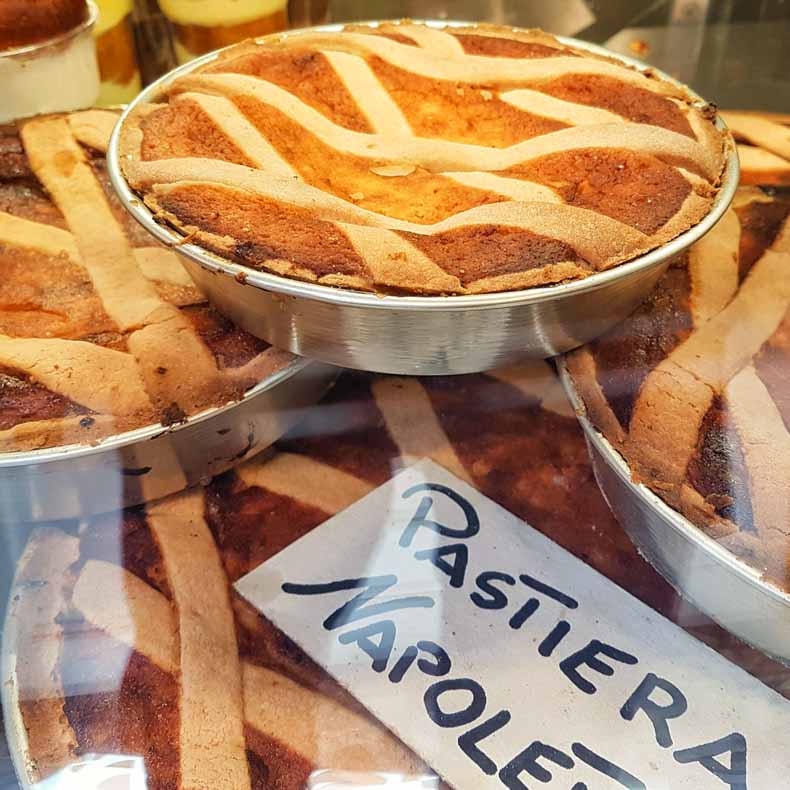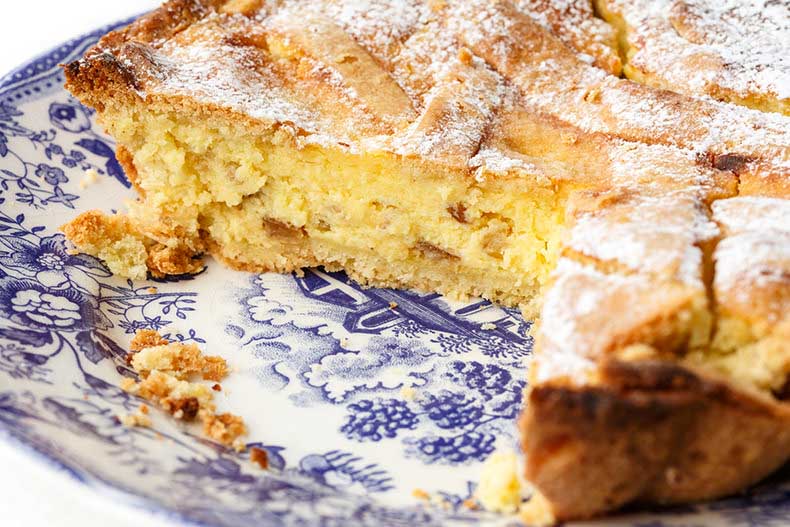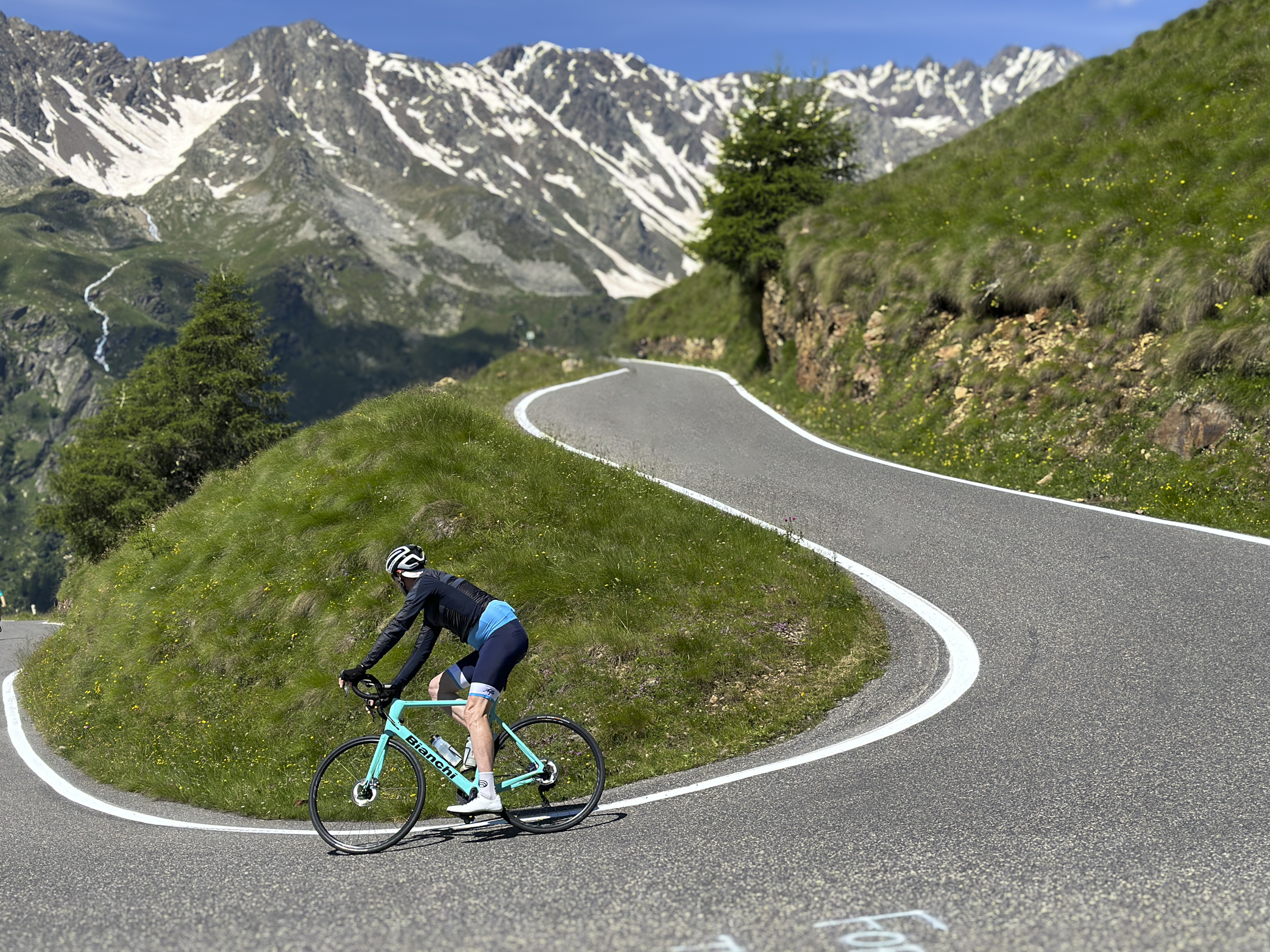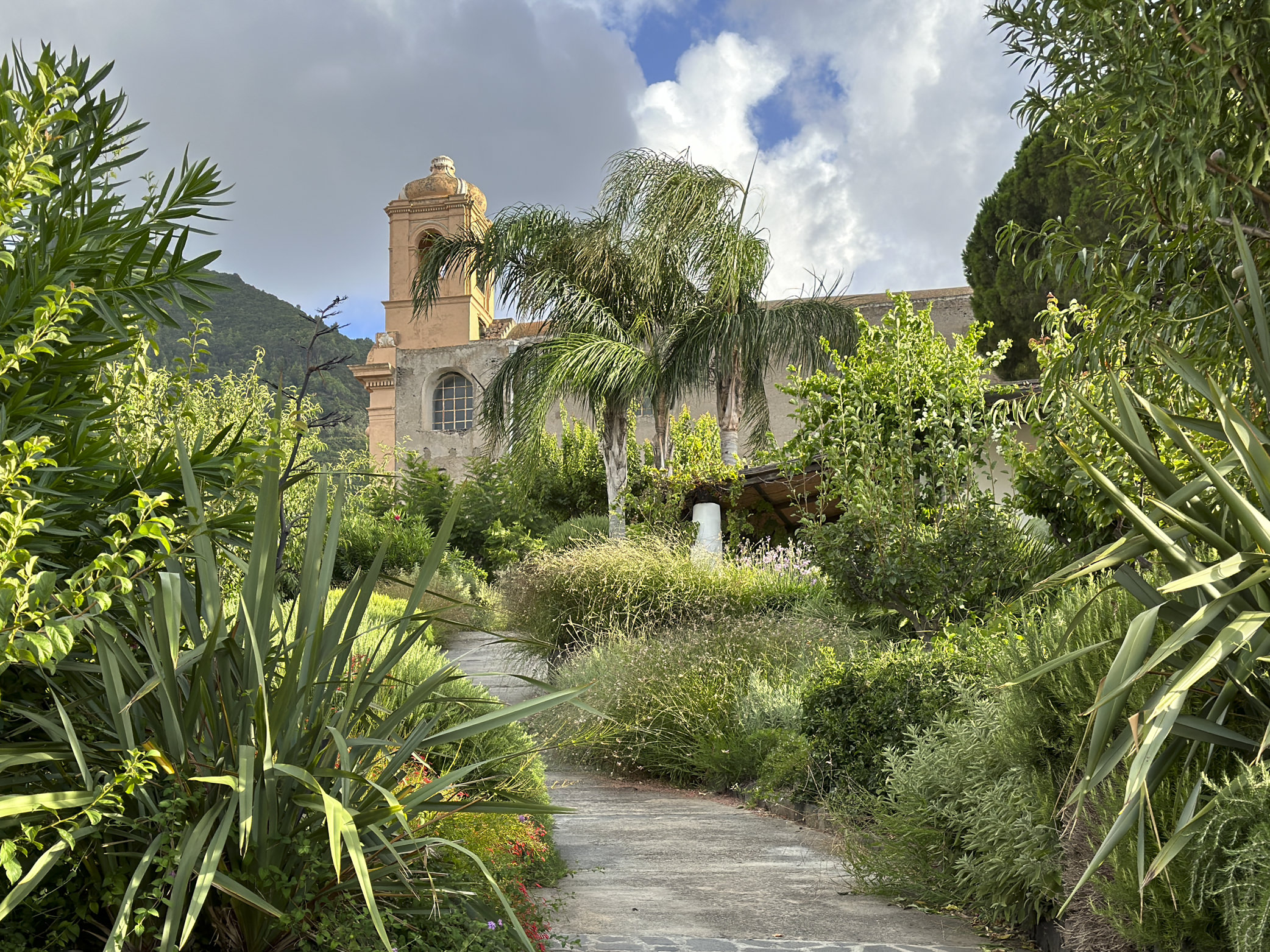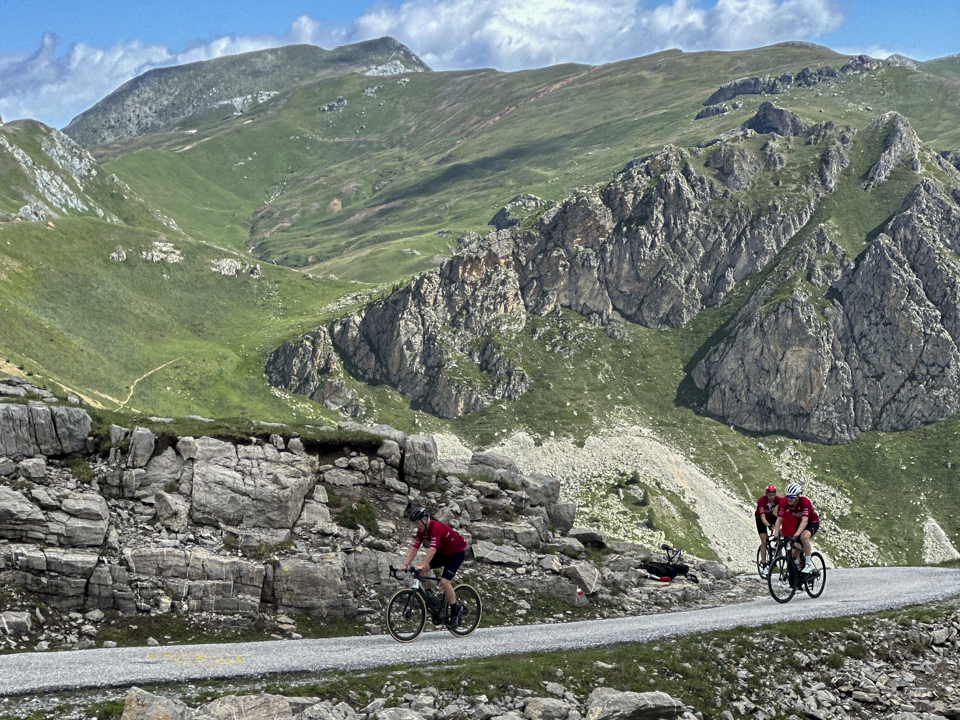Food is a big part of our lives, and this not only includes the pleasurable eating component, but also the rewarding elements of growing, preserving and cooking great food.
We have vegetable and herb gardens in Australia and Italy, and love nothing more than picking fresh food from the garden to use in our cooking. We’re also huge lovers of preserving when produce is in abundance; this Summer we made 100 bottles of beautiful tomato passata (given we’ll now be in Australia for Winter, one comfort is knowing we’ll have enough tomato passata to see us through!) and we also preserved 20kg of zucchini into a delicious zucchini sott’olio preserve that is a taste sensation on our lunchtime panini, or an antipasto platter at aperitivo time.
When it comes to preserving and cooking food, we almost always take the time honoured, ‘long way’ to do something. We love ‘making things from scratch’ as it always tastes so much better and is worth the extra effort, and this will be no different this Easter when we sit down to a lunch for two, and connect to family over the net.
We would usually always share Easter Sunday lunch around one table with family, and while this year will be different, we certainly won’t be holding back on the menu, which we thought we would share with you. Our Italian Easter Lunch menu comprises a couple of the recipes from Nancy’s mum and nonna, who both loved cooking Easter Sunday lunch for the family when they were all growing up, so this Easter is in memory of them.
Good Friday and Friday is Good.
We are kicking off proceedings with a Puglian classic of Tiella di riso, patate e cozze, as we wind back the clock and have a meat free Friday. This is a rice, potato and mussel dish that we love introducing our guests to when we are in Italy on our Puglia cycling tour as it is so authentically Puglian, and a simple taste sensation.
Tiella di riso, patate e cozze
Ingredients – (for 4):
- 1kg mussels
- 220 g Arborio rice
- 300 g tomatoes
- 1 kg potatoes
- 1 handful of parsley
- 2 cloves of garlic
- 1 onion
- 100ml white wine
- 50g of grated pecorino romano
- olive oil
- salt and pepper
Preparation:
- Pre heat oven to 180 degrees
- Wash the mussels very well and clean the beards off shells
- Place them in a pan with a lid, with a little olive oil over a high heat for a few minutes with the lid on
- Once cool, remove the empty half of the shell
- Strain the liquid and reserve
- Peel the potatoes and cut them into fairly thin slices
- Blanch and peel the tomatoes, remove the internal seeds and cut them into strips
- Finley chop the garlic and parsley
- Use a large and low pan and grease it with oil, then lay the onion cut into rings and sprinkled with half of the garlic and parsley
- Add half of the tomatoes and sprinkle in the pecorino
- Lightly salt, pepper and place half the potatoes on the tomatoes, salting again.
- Now add the rice on the potatoes and then the mussels, and the remaining parsley and garlic
- Finally add another layer of tomatoes and another of potatoes.
- Pour 800ml of cold water that includes the reserved liquid from the mussels and the white wine.
- Sprinkle this layer with plenty of olive oil.
- Put in the oven at 180 degrees for about 50 minutes.
Easter Sunday
Given our Easter Sunday lunch menu, we think we may be missing breakfast. Although a slice of Colomba di Pasqua cake, the traditional Italian Easter cake a lot like Panettone, could be good with a morning espresso. Or a hot cross bun never goes astray either. Whichever way, we’ll be keeping breakfast simple and light.
We’ll start lunch with our primo, Polpettine in Brodo, a superb soup of little meatballs in a chicken or meat broth. Both are great, however we usually make chicken broth. Nancy’s mum made this dish and we think its origins are Sicilian, which is where Nancy’s dad came from. So, it’s good to be sharing the menu around the regions.
Another option here is to forgo the meatballs and either use broken up spaghetti, or little tortellini. Either way, they are all delicious options.
Ingredients – (for 4):
Polpettine
- 200 g Pork loin
- 200 g Beef
- 60 g Stale bread
- 100 ml Milk
- 1/2 tsp nutmeg
- 1 teaspoon Spicy paprika
- salt
- pepper
Brodo di Pollo
- 3 Chicken carcasses
- 3 onions
- 3 carrots
- 3 sticks of Celery
- Extra virgin olive oil
- 30 g Parmigiano, grated
- Rosemary
Method
Chicken brodo
- To make the brodo, add the chicken carcasses, onions, carrots and celery to a pot and fill with water to cover by 5cm.
- Place on a low heat and cook for 2 hours or longer, if you have the time. The longer, the better.
- Strain and return the liquid to the cleaned pot.
Polpettine
- To make the meatballs, first soften the bread with the milk.
- Add both the pork and beef to a bowl. Squeeze the bread well with your hands, crumble it and add it to the meat.
- Add the nutmeg, paprika, ground pepper and a little salt. Mix the ingredients very well and form some meatballs.
- Heat two tablespoons of oil in a non-stick pan, lower the heat and brown the meatballs by turning them to brown them evenly.
- Remove from the pan and keep them aside.
- Add the meatballs to the brodo and cover again, lightly boil on medium heat for 30 minutes, and if necessary add one or two ladles of water and season with salt to taste.
- Serve with a little rosemary and grated Parmesan.
Secondo
Agnello e piselli (Lamb and Peas)
Eating lamb on Easter Sunday is fairly universal across all Italian regions, with the tradition strongly rooted in history. Lamb is an important symbol in many religions and with Spring just starting in the northern hemisphere, it is an important part of the Easter menu, whether roasted, cooked in a casserole style or as the Greeks do, on a spit. The dish we have selected is a one pot wonder from a sensational website called Memorie di Angelina that pulls together two of our favourites, lamb and peas, and is finished with pecorino romano and eggs. This is a dish that will leave you not only licking the plate, but doing the same with the pot. While this particular dish originates in Rome, a slight variation of it is also enjoyed in Tuscany.
Ingredients – (for 4):
- 1.5 kg lamb shoulder on the bone, cut into chunks
- 1 medium onion, thinly sliced
- 750g (1-1/2 lbs) peas, fresh or frozen
- White wine
- Olive oil
- Salt and pepper
To finish the dish:
- 2-3 eggs
- 25g (1 oz) freshly grated Pecorino romano cheese
- A few sprigs of fresh parsley, chopped (optional)
Method.
- Sauté the onion in olive oil over a low flame until tender and translucent.
- Increase the heat and add the lamb pieces, ensuring they are brown on all sides. Season with a pinch of salt and pepper. Keep an eye on the onion, so it doesn’t burn
- Add a splash of white wine. Stir and let the wine cook off.
- Add a cup of water, stir again, and cover with a lid
- Turn the heat to low, so that the lamb cooks gently. Cook for 45 minutes or until tender. Check the meat from time to time and add more water if needed to keep things moist.
- Add the frozen peas when the meat is almost tender, along with another cup of water if needed, and let them cook with the meat for the last 8 minutes, until they are tender.
To finish the dish,
- Beat the eggs and grated cheese together (and if you like, a bit of chopped parsley) in a bowl.
- Take the pot off the stove, and pour over the egg and cheese mixture, and mix it well but gingerly with the lamb and peas, turning until the eggs have set enough to form a creamy sauce.
- Serve immediately.
Dolce
Pastiera Napoletana
This is a very typical Easter dessert from Napoli, the home town of Nancy’s mum and nonna. Growing up, Nancy’s family would always eat Nonna’s Pastiera at Easter, and as young kids growing up in Australia, we probably didn’t appreciate the tradition, taste and significance of this cake as much as we do now. Nonna’s recipe had a dozen eggs in it and while the traditional recipe uses grano cotto or cooked wheat, Nonna always used rice, probably because it was easier to buy in Australia. In any case, we now have a huge appreciation for this cake and love making it each Easter, and also enjoyed it when we were in Napoli last year. It is delicious.
Shortcrust Pastry
- 300g plain flour
- 1 tbsp of sugar
- 150g unsalted butter
- 1 egg
- 150ml of water
- icing sugar, for dusting
Filling
- 300g grano cotto or Arborio rice
- 350ml milk
- 30g of unsalted butter
- 1 lemon, zest only
- 3 eggs
- 2 egg yolks
- 300g sugar
- 350g ricotta – (in the little tubs)
- 40g of candied citron
- 40g of candied peel, orange
- 20g of orange blossom water
- 1/4 tsp vanilla paste
- Begin by making the pastry. Place the flour, sugar and butter in a bowl and rub together with your fingers until it has the consistency of breadcrumbs. Add the egg and mix with your hands until combined.
- Add the water a little at a time, stirring well, until the mixture comes together to form a dough – you may not need to use all the water
- Shape the dough into a ball, wrap in cling film, and place in the fridge for at least 1 hour to chill
- Meanwhile, make the filling. Place the grano cotto or arborio rice in a saucepan and add the milk, butter and lemon zest. Bring to the boil, then reduce to a simmer, stirring all the time until cooked – this will take about 30–35 minutes. Remove from the heat and allow to cool completely
- Place the eggs in a bowl with the sugar and whisk until the eggs turn pale
- Place the ricotta cheese in a blender and blitz until it has the consistency of whipped cream. Add it to the egg and sugar mixture, folding it in with a spatula
- Add the cooled wheat mixture, candied peel, orange flower water and the vanilla bean paste into the ricotta mixture. Stir together until combined and put to one side
- Preheat the oven to 160°C/gas mark 3 and butter a 24cm x 4cm cake tin
- Dust a clean surface with icing sugar and evenly roll out the pastry, carefully lining the cake tin. Prick the bottom with a fork and pour in the filling, trimming the pastry from the edges of the tin to leave a neat edge. Reserve any spare pastry to decorate and form into a ball
- Roll out the ball into an even layer. Using a pasta wheel, cut 8 strips long enough to be placed across the cake tin. Place 4 of them across the top of the pastiera in one direction and then place the other 4 diagonally to create diagonal shapes
- Trim the edges of the strips against the edge of the tin and place the pastiera in the oven to bake for 1 hour. After this time, cover the top with foil and cook for another 30 minutes. Allow it to cool completely in the tin before carefully turning it out
- Serve the pastiera cold with a good quality Italian espresso coffee. It makes a lovely Easter breakfast, accompaniment to afternoon tea or dessert.
Over the course of a few hours, and with a little vino here and there, the only thing that will be remaining to do is enjoy a small siesta in the afternoon.
Saluti & Buona Pasqua.

